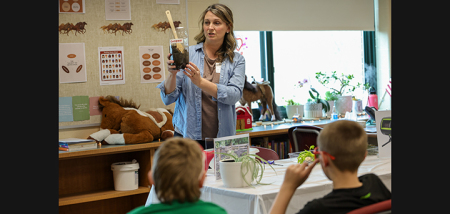Outdoor Chenango: Going Old School
Published:
December 2nd, 2020
By:
Eric Davis
 Outdoor Chenango Columnist Eric Davis
Outdoor Chenango Columnist Eric Davis
As the whitetail rut has more or less ended, deer hunting can become a drag as many deer movement during daylight seems to come to a screeching halt. The urge to find a hot doe that keeps bucks on their feet at all hours of the day has passed, so they may become nocturnal due to hunting pressure brought on by gun season. There are two things you can do to try to harvest a buck late in the season.
The first thing is to take some time off from hunting and let the area you hunt rest then hunt food sources. Studies have shown that it takes 3 days for the deer activity to return to normal after a stand is hunted. So, by letting your area rest for a week or more, the deer may start moving during daylight again. Then only hunt on major fronts moving in, particularly extreme cold fronts.
Bucks burn through their fat reserves during the rut and need to replenish them before harsh winter weather hits. Feeding becomes priority number one to them. When heavy cold fronts approach, deer will feed ahead of the front and after it hits, sometimes even during the front hitting. Carbohydrates are easily converted to fat reserves, so food sources heavy in carbohydrates are the best bet.
Leftovers from crop harvest are easy pickings if the snow hasn’t covered them up. Corn fields that are harvested with a combine usually have a lot of food left in them compared to those cut for silage. In the big woods, look for oak flats. Acorns that fell earlier in the fall will become more palatable after they sit and release some of their tannins. I’ve seen oak flats in the muzzleloader season that look like someone walked through with a rototiller due to how hard the deer were scraping up the ground to find acorns. Late season food plots such as turnip and radishes are designed to attract deer once the cold weather hits.
The second method you can try is to make them move by doing deer drives. Deer drives are looked at negatively by some deer hunters but are a great way to punch a tag on limited time to hunt. A deer drive generally consists of two parts, sitters and drivers, and operate by having the sitters set in places where they can shoot safely as deer are getting away from the drivers. While the notion of the drive seems simple, there are some finer points that need to be addressed to increase their success rate. The greatest point for drive success is safety. All hunters in the drive, whether sitting or driving, should wear blaze orange. Knowing where each sitter is and roughly where each driver will walk let’s everyone know safe shooting directions. The wind direction can play a big factor in a drive’s success.
Ideally, the sitters should be facing into the wind while the drivers walk with the wind at their back towards the sitters. This allows deer to smell the drivers and try to get away downwind without smelling the sitters and avoiding them. Another factor is the speed of the drivers. While the point is to get the deer up and moving, if the deer are at full speed, the sitters won’t get good shot opportunities.
When I am a driver, I like to take three to five steps and then stop for three seconds. This tends to make the deer walk away instead of running away. A walking deer is easy to stop with a “MAP” or a whistle, in order to get a good shot off. If a sitter shoots, drivers should stop walking for at least 30 seconds that way the sitter can get a bearing on where a hit deer runs before any more deer come out in the drive. When performed safely and correctly, deer drives are great ways to fill tags.
Author: Eric Davis - More From This Author
Comments








